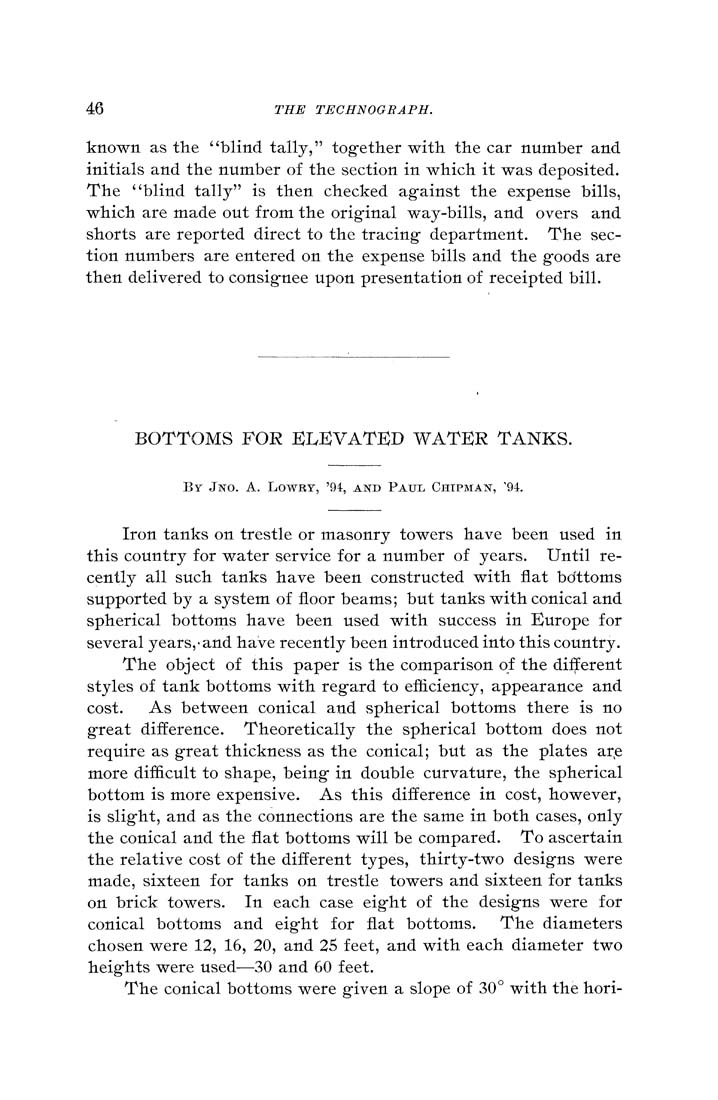46 THE TECHNOGRAPH.
known as the "blind tally," together with the car number and
initials and the number of the section in which it was deposited.
The "blind tally" is then checked against the expense bills,
which are made out from the original way-bills, and overs and
shorts are reported direct to the tracing department. The sec¬
tion numbers are entered on the expense bills and the goods are
then delivered to consignee upon presentation of receipted bill.
BOTTOMS FOR ELEVATED WATER TANKS.
By Jno. a. Lowry, '94, and Paul Chipman,
Iron tanks on trestle or masonry towers have been used in
this country for water service for a number of years. Until re¬
cently all such tanks have been constructed with flat bottoms
supported by a system of floor beams; but tanks with conical and
spherical bottoms have been used with success in Europe for
several years,-and have recently been introduced into this country.
The object of this paper is the comparison of the different
styles of tank bottoms with regard to efficiency, appearance and
cost. As between conical and vSpherical bottoms there is no
great difference. Theoretically the spherical bottom does not
require as great thickness as the conical; but as the plates arp
more difficult to shape, being in double curvature, the spherical
bottom is more expensive. As this difference in cost, however,
is slight, and as the connections are the same in both cases, only
the conical and the flat bottoms will be compared. To ascertain
the relative cost of the different types, thirty-two designs were
made, sixteen for tanks on trestle towers and sixteen for tanks
on brick towers. In each case eight of the designs were for
conical bottoms and eight for flat bottoms. The diameters
chosen were 12, 16, 20, and 25 feet, and with each diameter two
heights were used—30 and 60 feet.
The conical bottoms were given a slope of 30° with the hori-
|








